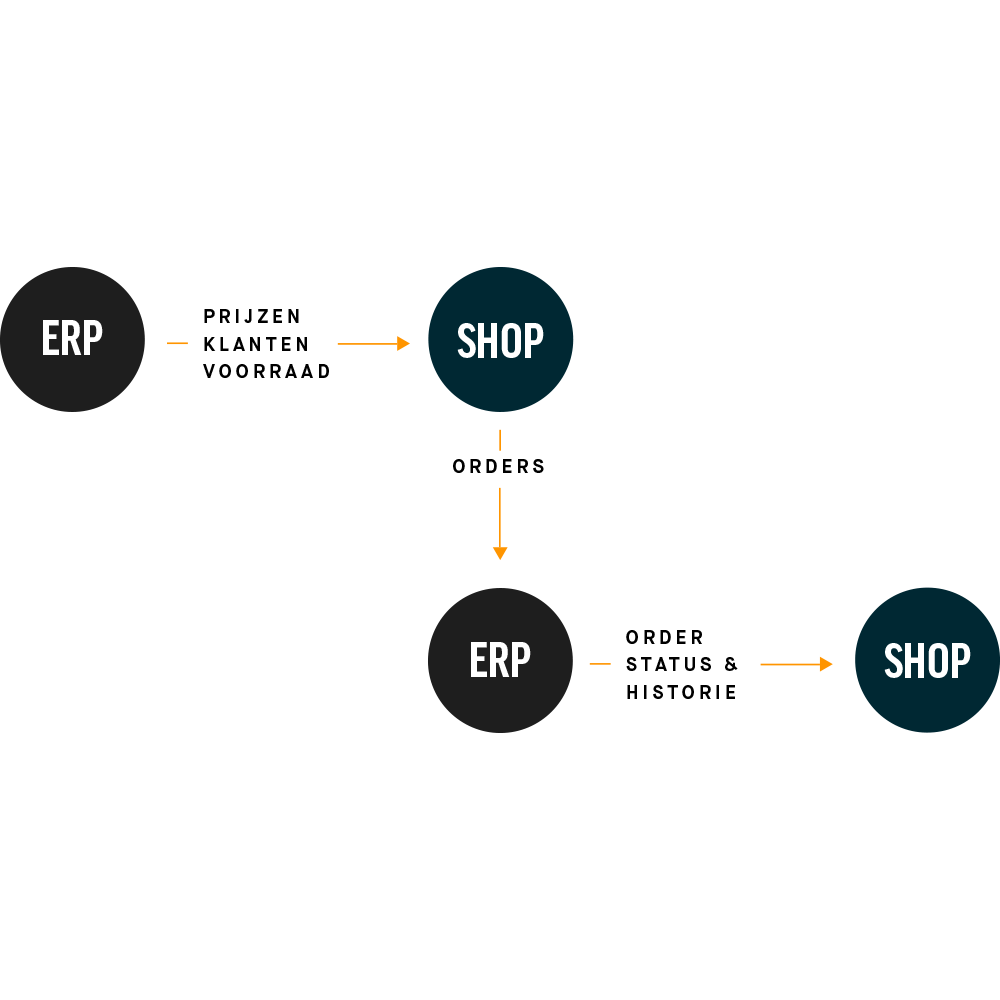INTERFACES
Customers
Batch-import of customer information, and real-time creation of new clients.
Prices
Batch-import of gross prices, and real-time requesting client-specific prices and discounts.
Inventory
Real-time requests for inventory status, when placing items in the shopping basket and just before the order instance.
Orders
Real-time supply of orders to the ERP. Creation of order numbers in the ERP.
Order history
Real-time request of order history for repeat orders and insight into order status or backorders.
Invoice history
Real-time request of invoice history, including PDF-format invoices.
Authorizations
Batch-import of client groups and their authorizations for product groups and products.
OCI
Direct link to order systems using the standard Open Catalog Interface.
3 ways of interfacing your ERP
Import / export
All data supplied from ERP-systems can be exported into Excel format. Convenient for conducting analyses, for example. In addition, data can also be exported manually, for example if an automated interface with the ERP-system is impossible for any reason. Moreover, data can also be enriched with information not present in the ERP-system via the import.
Batch en realtime
Shoxl uses two types of interface: batch and real-time. A batch-oriented interface is used for data that is subject to relatively little change, such as client data and gross price lists. This type of information tends to be updated on a daily basis. By gathering this data and presenting it locally, the load on the ERP-systems is minimized. Data that is subject to more frequent chance is requested in real-time from the ERP-system via webservices. Consider inventory data or client-specific prices and discounts, for example.
ERP-cache
Most modern ERP-systems are equipped with a webservice-layer which can be used to gather and supply data. The use of this service, however, can be very taxing for the system. Older ERP-systems lack the capability to interface in real-time – some lack the capability to interface at all. For these situations, Shoxl has developed a solution as part of its architecture: the ERP-cache.
The ERP-cache pre-loads all the data a shop would normally request from the ERP-system in real-time. So, instead of burdening the ERP-system, the shop gathers the data from the ERP-cache, using exactly the same interface. As far as the shop is concerned, the fact that the ERP-system is not being consulted is invisible: the shop uses a kind of copy of the ERP-system. This approach makes it possible to create a virtually real-time experience, even for hard-to-access ERP-systems.











